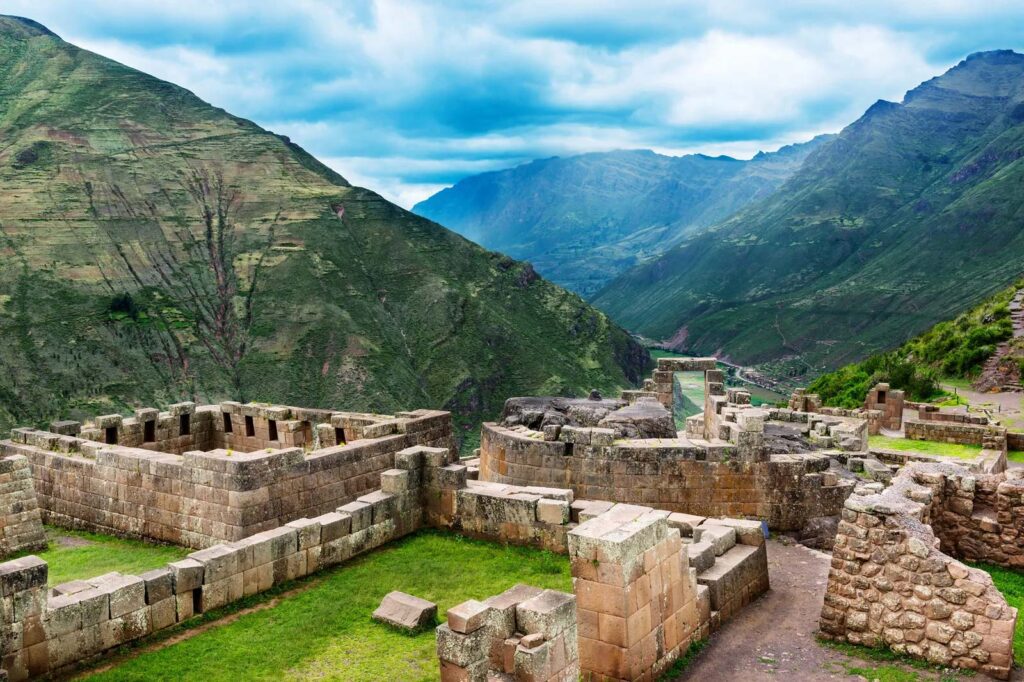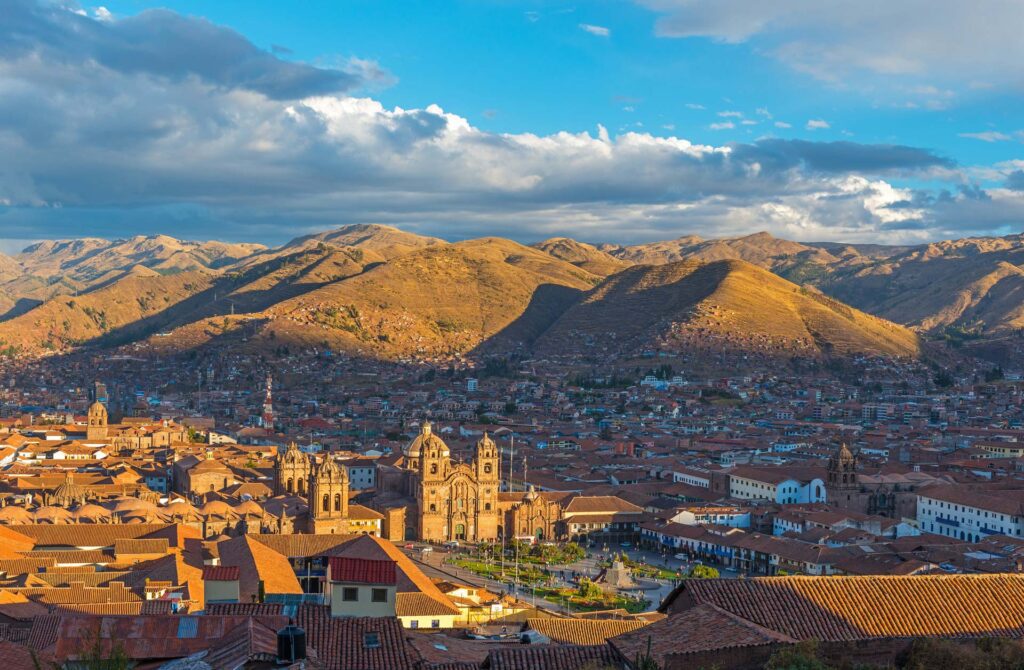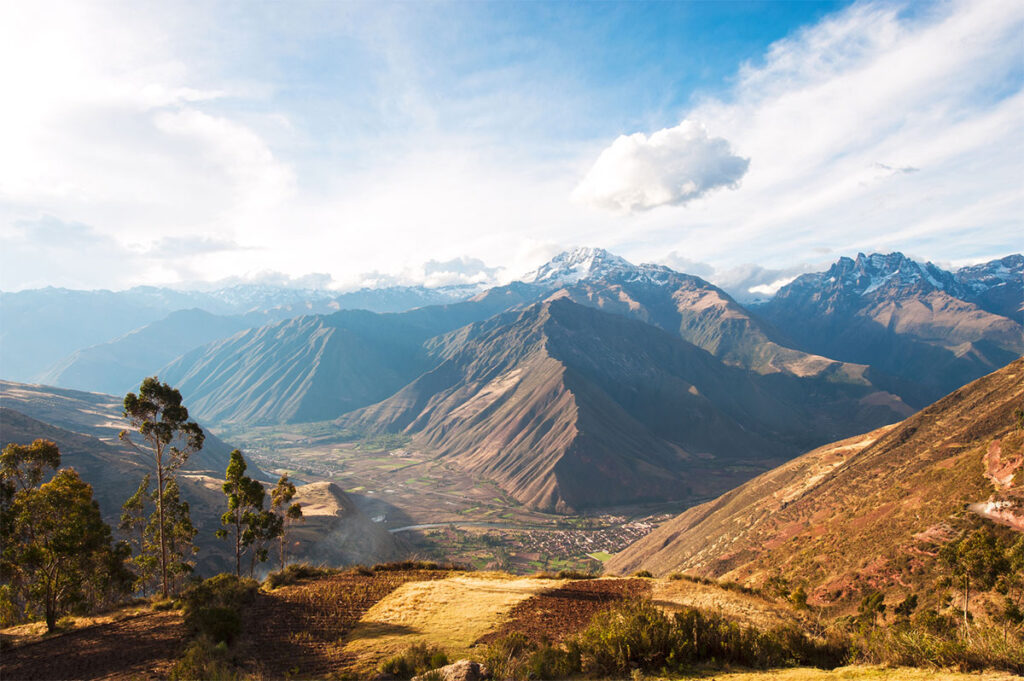Sacred Land
“A land of rich culture, natural beauty and a profound connection to the past and the wisdom of the ancestors”
THE INCA CIVILIZATION
The Inca civilization (known as Tawantinsuyu, Quechua for “Realm of the Four Lands”) was one of the greatest empires in human history!
The Incas arose from the highlands of modern-day Peru sometime during the 12th century or early 13th century, the conquest of the Spanish abruptly ended their reign in the early 15th century.
At its peak, the empire extended a distance of around 2,500 miles, from northern Ecuador to central Chile, and it had about 12 million inhabitants from more than 100 different ethnic groups. It was the largest empire in pre-Columbian America and one of the largest empires in history.
The Incas were a sophisticated society, some of their most notable and celebrated achievements include their monumental megalithic architecture, irrigation canals, extensive road networks, agricultural innovations and production, sophisticated calendars, fine textiles, ceramics, and complex rituals and religious systems. The Inca people created a well-developed social structure, a centralized state where most of the population were self-sufficient farmers, skilled builders and weavers.
Even Though the Inca civilization was fully conquered 500 years ago, its influence can still be felt today. Their impressive temples and sacred sites are still standing despite the Spanish destruction, Quechua, the language of the Incas, is the most widely spoken pre-Columbian language of the Americas and is spoken by indigenous and mestizo people today throughout Argentina, Chile, Bolivia, Peru, Ecuador, and Colombia.
Some of the Inca cultures still live to this day, in their dances, music, textiles, and artwork.

CUSCO AND THE SACRED VALLEY OF THE INCAS
The city of Cusco ( Q’osqo in Quechua means “navel of the world”) was the capital of the Inca Empire and it was its most important political, cultural, religious, and military center.
During the Inca times impressive monuments, temples, and fortresses were erected, as well as a network of roads that stretched for almost 25,000 miles (around 40,000 km) and connected all points in the vast empire which extended from the border of Ecuador and Colombia to modern Santiago, Chile.
After the Spanish conquest, Cusco remained one of the most important cities on the continent. The Spanish settled in Cusco, building Baroque cathedrals, churches, and palaces directly on top of the Inca temples, or using Inca stones as the base for their buildings, but even though most of the Inca Cusco was destroyed and changed forever, many perfectly constructed Inca stone walls, examples of impressive stonemasonry, still stand strong.
Modern Cusco is a place where the old and the new converge: old Inca and colonial history, splendid architecture, and contemporary mestizo culture blend in this vibrant city!
Despite its fame and popularity among travelers, this city of such great historical and spiritual importance has maintained its unique charm over the centuries. From grand cathedrals to ancient archaeological sites, it’s easy to find yourself immersed in all that the city has to offer while you discover its most famous monuments. Its highlights include both Inca ruins and colonial-era Baroque and Renaissance churches and mansions.
We are so excited to explore with you some of the most astonishing and important temples in the area: Sacsayhuamán, Qenqo, and Qoricancha.

THE SACRED VALLEY
The Sacred Valley of the Incas – Willka Qhichwa in Quechua – is an extensive area of around 60 km that stretches between the towns of Pisac and Ollantaytambo and is located 45 minutes by car northwest of Cusco city. This land has been revered by the indigenous people for centuries and is one of the major tourist destinations in South America as it contains most of the well-preserved archeological Inca sites, as well as stunning natural wonders and vibrant indigenous communities.
Inca and pre-Inca cultures regarded the valley as holy land due to its fertile soils, abundant water supply, and beautiful landscapes. It has been a pilgrimage site for thousands of years, a sacred place of immense spiritual and cultural significance where the Inca people built magnificent temples, villages, water channels, and agricultural terraces, which have been preserved and continue to be used by the local people to this day.
The Sacred Valley is nestled between majestic Andean mountains, some of whom are considered powerful spirits and deities, known as Apus. The Vilcanota / Urubamba River winds through the valley, making it a rich agricultural area. The Incas believed that the Vilcanota River was the representation of the Milky Way on Earth, this was another reason for the valley to be considered sacred.
The indigenous people that live in the valley have preserved many of their traditional costumes, language, and age-old traditions. To visit the Sacred Valley is to immerse oneself in the beauty of the land and its rich history, past and present!
The astonishing beauty of this valley has captivated many people, including us who have made it our home! Yugo, Janeth, Fito and his family have lived in the valley for many years, deeply connected to the spirits of the mountains, the indigenous people, and the magic of this sacred land. This powerful and majestic land is a portal where the ancient wisdom of the ancestors is still alive. It brings us a lot of joy to host our retreat in the Sacred Valley, our home.

INDIGENOUS CRAFTS AND CULTURE
We want to dedicate a special section of our website to talk about the amazing textiles produced by the local indigenous people.
The skill and art of Andean weaving has been passed down through generations for hundreds of years – perhaps even predating the Incas. This ancient wisdom was usually shared from mother to daughter, and it manifests as textiles of incredible craftsmanship and beauty. Inca weavers were highly revered in South America for their ability to transform raw cotton or alpaca fibers into stunning works of art through spinning, dyeing with plants and herbs, and creating intricate designs. Inca textiles were highly prized possessions in pre-colonial societies – used as offerings to deities, special gifts for occasions such as births & marriages, and even currency. The very best textiles were more valuable than gold or silver!
Today these textiles represent a living history that still carries on the traditions of the Inca people alive by inspiring modern designers and local indigenous artisans. The weavers of old may have gone, but their skill and vision have been preserved by all the amazing weavers of this land, who learned this art from their ancestors.
We are very fortunate to have one of the most talented and skilled weavers in the region as part of our teaching team! Our dear friend Alicia Perezchicchi and her beautiful daughters will join us to share with us the art of Inca weaving. Alicia is part of the few weavers in the region who keep alive the textiles of old, crafted with the same ancient techniques that have been passed down from generation to generation. As an incredible teacher, Alicia is dedicated to preserving this living history as she imparts her knowledge of weaving techniques to others. Her efforts not only honor the textile traditions of her ancestors but also provide a platform for other local artisans to thrive in.
